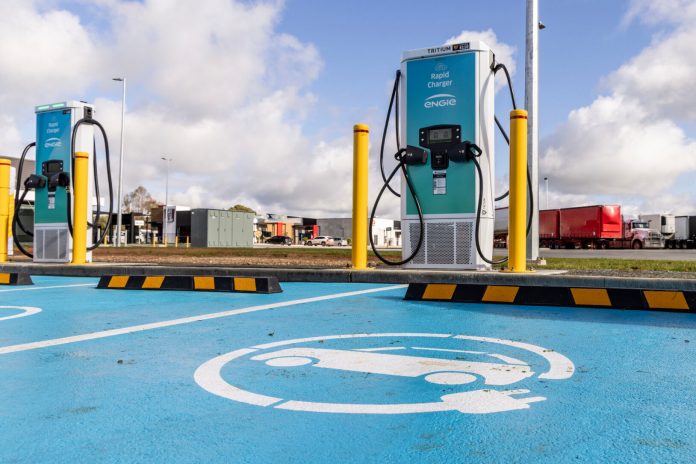Renewable energy business ENGIE is bringing its global expertise to make it easier to drive an Electric Vehicle (EV) in Australia. Through an expansive Fleet and Public charging network of rapid direct current (DC), and sustained alternating current (AC) charging hubs, powered by 100% renewable energy, ENGIE is “making range anxiety and the extra petrol stop a thing of the past.”
Chadstone Shopping Centre in Malvern East, Victoria is the latest ‘everyday’ destination to be equipped with ENGIE charging infrastructure, making it convenient, cost-effective and environmentally friendly to charge the car while customers go about their day-to-day tasks.
“To date, more than 70 tonnes of CO2-e has been abated across the ENGIE EV Charging Network, that’s the equivalent of more than 500,000 kilometres travelled, or 50 kilolitres of fuel saved by not using internal combustion engines.”
ENGIE aims to operate 300 charging points across Australia by the start of next year, with over 80 already in place. About ,000 charge points are scheduled to be installed by 2025, meaning the ENGIE public rapid charger network will be accessible within 10km for around 80% of the Australian population.
“Underlining the importance of EV infrastructure to changing the mind of petrol car-loving Australians, research conducted by ENGIE showed that 42% of respondents said they would be more likely to purchase an EV as their next car if there were more charging points available. Forty-six per cent of respondents also agreed that EVs play an essential role in a sustainable future for the planet.”
ENGIE Director of Green Mobility Greg Schumann says, “Every small step counts. Making green-energy powered EV charging hubs more readily available and convenient for drivers will encourage Australians to make the switch to sustainable forms of travel. We consider it our responsibility to help drive that confidence for change. For ENGIE that means our customers don’t go out of their way to charge, they simply charge when they are already out.”
ENGIE’s public EV network is centred on public spaces that are already heavily frequented locations.
There are also charging points rolling out across major commuter carparks in partnership with Transport for New South Wales. Public transport and private transport fleets are also on the ENGIE EV charging map. “These are opportunities to make an impact on a larger scale, driving government and industry toward change rather than just focusing on the individual.” The Victorian Government has already come to the table with trials for electric buses and associated charging points with the ComfortDelGro Corporation and Monash University in Melbourne for EV charging infrastructure, all supported by ENGIE.
In addition, this month ENGIE unveiled charging points at Flinders University in South Australia that showcase bidirectional vehicle-to-grid (V2G) technology, meaning the power goes two ways, allowing the charging stations to act as a Virtual Power Plant (VVP) that feeds excess energy back into the university’s electricity grid during peak times. The project recently saw Flinders University win the Sustainable Development Goals Initiative of the Year Award at the Triple E Awards in Barcelona.
“These partnerships are important. Progressive companies are embracing the need to incorporate EV infrastructure to meet the demand from consumers, be they a family driving to the shopping centre, catching an electric bus, or getting business to transition their fleet to EVs,” Mr Schumann said.
Driving an EV is no longer considered a luxury, but ENGIE still wants it to feel like one when you plug-in and charge the car while getting some much-deserved retail therapy at Chadstone or its Vicinity counterpart, Chatswood Chase in Sydney. “We like to think of this as a natural add-on to the shopping experience, an extra opportunity to browse, or time saved on your weekly grocery trip. At the commuter carparks and in the Universities, it’s as simple as our charging points are working for you while you work and most importantly all the power we are using is generated sustainability from wind and solar.”





